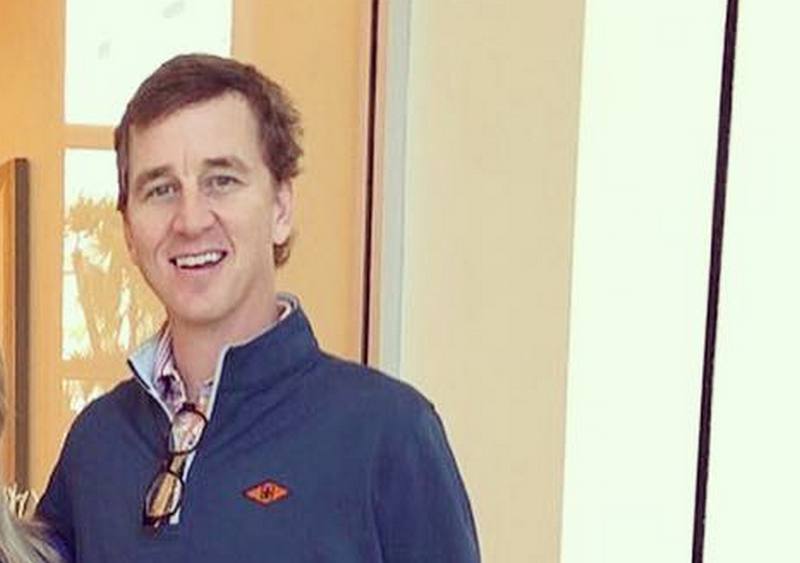Cooper Manning, the beloved former sports broadcaster and brother of NFL legends Peyton and Eli Manning, has been open about his battle with spinal stenosis. This condition has impacted his life significantly, but with determination and medical advancements, he continues to inspire many. If you or a loved one is dealing with spinal stenosis, understanding the condition is the first step toward effective management.
Spinal stenosis is a condition that affects millions of people worldwide, causing discomfort and limiting mobility. This article dives deep into Cooper Manning's journey with spinal stenosis, offering insights into the condition, its symptoms, diagnosis, and treatment options. Whether you're a fan of Cooper or someone seeking information about this condition, you'll find this guide both informative and actionable.
Our focus is to provide accurate, reliable, and up-to-date information, ensuring that readers are well-equipped to manage spinal stenosis effectively. Let's explore Cooper Manning's story and learn how to navigate this challenging condition.
Read also:Otto From Alaska Last Frontier The Ultimate Guide To His Life And Adventures
Table of Contents
- Cooper Manning's Biography
- What Is Spinal Stenosis?
- Symptoms of Spinal Stenosis
- Diagnosing Spinal Stenosis
- Treatment Options for Spinal Stenosis
- Lifestyle Changes for Managing Spinal Stenosis
- Cooper Manning's Journey with Spinal Stenosis
- Medical Advancements in Spinal Stenosis Treatment
- Preventing Spinal Stenosis
- Building a Support Network
Cooper Manning's Biography
Personal Details
Before delving into Cooper Manning's experience with spinal stenosis, let's take a moment to understand who he is. Cooper Manning is the eldest son of Archie and Olivia Manning, a family renowned in American sports history. Below is a brief overview of his personal details:
| Name | Cooper Manning |
|---|---|
| Date of Birth | January 6, 1970 |
| Place of Birth | New Orleans, Louisiana, USA |
| Profession | Former Sports Broadcaster |
| Family | Brothers: Peyton Manning (NFL Legend) and Eli Manning (NFL Legend) |
What Is Spinal Stenosis?
Spinal stenosis refers to the narrowing of spaces within the spine, which can put pressure on the nerves traveling through the spine. This condition is often associated with aging and can lead to a variety of symptoms, depending on the location of the narrowing. The two primary types of spinal stenosis are cervical stenosis, which affects the neck, and lumbar stenosis, which impacts the lower back.
Causes of Spinal Stenosis
The condition can result from several factors, including:
- Age-related wear and tear
- Herniated discs
- Thickened ligaments
- Tumors
- Injury to the spine
Symptoms of Spinal Stenosis
Recognizing the symptoms of spinal stenosis is crucial for early diagnosis and treatment. Common symptoms include:
- Pain in the neck or back
- Numbness or tingling in the extremities
- Weakness in the legs or arms
- Difficulty walking or standing for long periods
Cooper Manning has spoken about the challenges he faced due to these symptoms, emphasizing the importance of seeking medical advice.
Diagnosing Spinal Stenosis
Diagnosing spinal stenosis involves a thorough physical examination and imaging tests. Doctors may use X-rays, MRIs, or CT scans to identify the narrowing in the spine and assess the severity of the condition. Early diagnosis is essential for effective treatment and management.
Read also:Exploring The Net Worth Of Marlon Jackson A Comprehensive Analysis
Diagnostic Tools
Some of the diagnostic tools used include:
- Magnetic Resonance Imaging (MRI)
- Computed Tomography (CT) scans
- X-rays
Treatment Options for Spinal Stenosis
Treatment for spinal stenosis varies depending on the severity of the condition. Options range from conservative treatments like physical therapy and medication to more invasive procedures such as surgery. Cooper Manning opted for surgery to alleviate his symptoms, highlighting the effectiveness of modern medical interventions.
Non-Surgical Treatments
Non-surgical treatments include:
- Physical therapy
- Medications like NSAIDs
- Epidural steroid injections
Lifestyle Changes for Managing Spinal Stenosis
Adopting certain lifestyle changes can significantly improve the quality of life for individuals with spinal stenosis. Regular exercise, maintaining a healthy weight, and avoiding activities that strain the spine are essential practices. Cooper Manning's commitment to physical therapy and rehabilitation serves as a testament to the importance of these changes.
Recommended Exercises
Exercises that are beneficial for spinal stenosis sufferers include:
- Swimming
- Walking
- Stretching routines
Cooper Manning's Journey with Spinal Stenosis
Cooper Manning's journey with spinal stenosis is both inspiring and informative. He has been open about his diagnosis, treatment, and recovery process, offering hope to millions of people dealing with similar conditions. His story emphasizes the importance of seeking professional help and adhering to a treatment plan.
Key Milestones in Cooper's Journey
- Diagnosis of spinal stenosis
- Decision to undergo surgery
- Post-surgery rehabilitation
- Return to daily activities
Medical Advancements in Spinal Stenosis Treatment
Recent advancements in medical technology have improved the treatment options available for spinal stenosis. Minimally invasive surgeries, advanced imaging techniques, and personalized treatment plans have made it possible for patients to regain their quality of life. Cooper Manning's positive outcome is a reflection of these advancements.
Minimally Invasive Procedures
Some of the minimally invasive procedures include:
- Laser spine surgery
- Endoscopic discectomy
- Spinal decompression therapy
Preventing Spinal Stenosis
While some causes of spinal stenosis, such as aging, are unavoidable, there are steps individuals can take to reduce their risk. Maintaining a healthy lifestyle, practicing good posture, and avoiding repetitive strain on the spine can help prevent the condition.
Tips for Prevention
- Engage in regular exercise
- Maintain a healthy weight
- Practice proper lifting techniques
Building a Support Network
Having a strong support network is vital for anyone dealing with spinal stenosis. Family, friends, and healthcare professionals can provide emotional and practical support, making the journey easier. Cooper Manning's support system played a crucial role in his recovery, demonstrating the power of community and connection.
Ways to Build Support
- Join support groups
- Seek counseling if needed
- Engage with online communities
Conclusion
In conclusion, Cooper Manning's battle with spinal stenosis offers valuable insights into the condition and its management. Understanding the symptoms, diagnosis, and treatment options can empower individuals to take control of their health. By adopting lifestyle changes, embracing medical advancements, and building a strong support network, patients can improve their quality of life significantly.
We encourage readers to share this article with others who may benefit from the information. If you have any questions or personal experiences to share, please leave a comment below. Together, let's continue the conversation about spinal stenosis and its impact on our lives.


